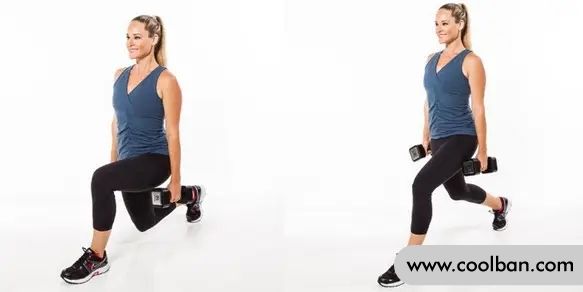Do lunges work for the glutes or legs?
There's always a lot of talk about the squat when we're talking about some fitness exercises, but as a variation of the squat, the lunge should be mentioned more. From the point of view of daily movements, there will be more single-leg squat modes, such as tying shoelaces, picking up things, etc. These are basically single-leg movements, while squatting occurs less frequently. Of course, if there is no place to sit and want to squat down to finish the meal, if it is face to face, it is the squat action pattern. At this time, we can use "Asian squat" to describe it may be more appropriate.
So, from an action point of view, the lunge squat can be said to be a variant of the squat, but it has benefits that the squat cannot achieve, such as:
Lower weights can be used for better training purposes as one leg is required to support more weight;
Can better exercise to the core, because we need to maintain the stability of the body;
It can stimulate the muscles of the lower body more comprehensively, such as the gluteus maximus, inner and outer thighs, and calf muscles;
Therefore, there is such a sentence to describe the difference between squats and lunges, that is, "Ten squats are not as good as one lunge". Of course, this is an exaggeration. There are pros and cons to each type of exercise.

For lunges, this move can be a leg workout or a glute workout. What is the difference between the two? This is the question to be discussed next.
Are lunges useful for hips or legs?
When it comes to the training goal of lunge squats, many friends will have a question, that is, whether this action is to train the buttocks or the legs. In fact, the main stimulation target will be different depending on the exercise method. For lunges, there are two movements. Mode, one is based on the gluteus maximus, and the other is based on the quadriceps.
1. Glute-based exercises
If you want to exercise the gluteal muscles through this action and reduce the stimulation of the leg muscles, then you need to change the way of movement appropriately. The basic points are as follows:
Stand with your feet back and forth. When squatting, the distance between your upper and lower legs is vertical or slightly larger, your upper body is leaned forward, your spine is kept neutral, and you look at the ground.
Keep the body stable, keep the core tight throughout the whole process, control the rhythm and slowly bend the knees and squat, pay attention to adjusting the center of gravity so that the center of gravity falls on the heel of the front foot, and the calf is perpendicular to the ground
At this time, the center of gravity mainly falls on the front feet, the front feet bear about 90% of the weight, and the rear legs mainly play a supporting role.

2. Exercises that focus on the quadriceps
Stand with feet back and forth, upper body straight, back straight, core tight, looking straight ahead
Keeping your body steady, keeping your core tight at all times, bend your knees and squat down until your back leg is at heel height, then stand up until your body is upright
Pay attention to adjusting the center of gravity so that the center of gravity falls in the middle of the body, that is, the center of the feet
Of course, these two movement modes will be adapted in different changes, such as forward or backward lunge squats, walking lunge squats, forefoot toe lunge squats, Bulgarian single leg squats, etc., so lunge squats are an exercise . To train your glutes or legs, you have to make adjustments that work for you based on your training goals and preferences. Of course, no matter how you adjust it, you must avoid related errors and complete it normally.

Summary: Compared with squats, lunge squats have their own advantages, but no matter how good a movement is, it must be done well. This is the premise to improve training efficiency and avoid injury. In addition, as for where to practice lunges, you need to adjust according to your training purpose. Of course, if you feel bad during the adjustment process, you can try it slowly, or choose another movement to do instead of that.
